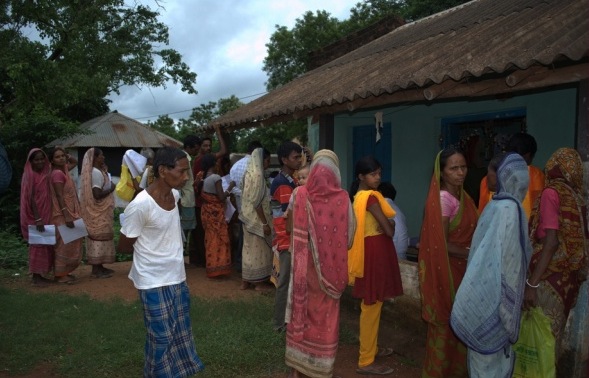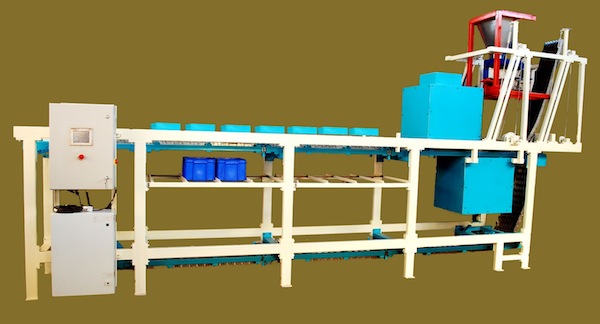Tech for Impact: Rapid advances in health care, education and design powers Village Capital India cohort
In mid-April, we launched our 18th Village Capital program, “Tech for Impact,” in partnership with CIIE (the Center for Incubation, Innovation, and Entrepreneurship) at IIM-Ahmedabad. We received about 400 applications from across India from entrepreneurs building technologies that provide affordable basic services to the poor, and have high growth.
One of the best things about our high-level perspective is the ability to see a huge volume of enterprises and identify trends in disruptive innovation. In introducing this cohort, I want to identify some themes we’re seeing from the top innovators in India.
(For more on how the Village Capital cohort program works, check out a previous post on NextBillion).
Tech-enabled health diagnostics
Health care in India is a massive problem. While, in theory, the poor have free access to health care, in practice, the poor can rarely have time in front of a doctor, and preventative care is almost nonexistent. Fifty percent of Indians living in rural areas have no access to health care providers at all, and a medical emergency can bankrupt a family.
In a phrase, most innovators in Indian health care are following the theme, “an ounce of prevention is worth a point of cure.” Some of our most innovative ventures are focused on solving this problem—providing basic preventative care to the poor at a price they can afford out of their pocket:
Advance DIA-BESE Care has developed a basic diagnostic test that, through a novel, algorithm-driven program, can provide medical advice and lifestyle suggestions for Indians facing diabetes. India has the largest number of diabetes cases in the world—40 million—and another 30 million are at severe risk of type-2 diabetes. Patients pay $1.50 for an initial medical examination, diagnostic report, and health suggestions—their pilot has served 2,500 patients.
MediAngels is creating an online hospital—providing affordable medical services with top-flight doctors utilizing telecommunications. Patients receive top telemedicine treatment for just a few dollars—and to date, MediAngels’ pilots have earned $100,000 in revenue.
 iKure has developed WHIMS (Wireless Health Incidence Monitoring System), a cloud based software application which is utilized to leverage urban doctors in order to remotely monitor rural patients. The startup is setting up affordable rural, telemedicine-enabled health clinics in East India at a price point affordable to the BoP; their first center has done US$5,000 in revenue through patient visits, and they are raising a seed funding to scale.
iKure has developed WHIMS (Wireless Health Incidence Monitoring System), a cloud based software application which is utilized to leverage urban doctors in order to remotely monitor rural patients. The startup is setting up affordable rural, telemedicine-enabled health clinics in East India at a price point affordable to the BoP; their first center has done US$5,000 in revenue through patient visits, and they are raising a seed funding to scale.
HealthBooth operates off the tag line “Health for 50 rupees in 5 minutes.” Their comprehensive health screening operation enables them to set up in any village, any urban area, and provide immediate basic health diagnostic information at a price affordable to the very poor. After two successful pilots, they are working on the design to scale the venture.
Doctor on Call is a free medical helpline that provides the poor a direct connection to doctors on their personal phone in real-time; advertising from the medical industry makes this a promising business opportunity.
In health, we see consistent innovation in low-cost service delivery to the poor, and we’re excited to be operating a cohort that is able to support and partner with one another in a common end.
Affordable learning solutions
An estimated 20 million students in India — approximately the entire primary school-going population in the U.S. — live below the poverty line and attend private school. Up to 30 percent of low-income Indian parents’ budget—in some houses, more than any other line item — goes to education. Tremendous innovation is happening across the education sector, particularly through business models serving the poor, and we’re excited to have education as a track focus for Village Capital-CIIE. We selected two top innovators:
Edsix provides highly interactive educational games, based on best-in-class learning techniques, for sale to government and affordable private schools, targeting increasing literacy and learning outcomes among the poor. They’ve brought in USD $100,000 in investments to date, and have launched 130 different games.
Experifun has developed a suite of, interactive science product solutions to dramatically improve in-classroom learning at the K-12 level. The affordable private school model—effectively, private schools that cost several dollars/month and target the poor—educate approximately 20 million children in India. While the infrastructure of the schools is ubiquitous—and something parents will pay for—the quality of education is often lacking, due to a lack of affordable educational materials (nearly all affordable private schools operate in slum areas, and lack the free cash flow to pay for top educational best practices). Experifun is a best-in-class science curriculum and toolkit that is price-point accessible to schools serving the poor. To date, Experifun has sold to 40 schools in a pilot, and is looking to scale.
From both a business model and an impact perspective, we’re incredibly excited about the prospects of education innovations serving the poor.
India-based invention — designing for cost
Most market-based initiatives to serve the poor in India fail at price point. Western companies develop inventions that seem like they would fit great in India, but the cost structure of the innovation is too expensive for the poor to afford.
Fortunately, India is a land of inventors. A high degree of engineering/technology talent, combined with an entrepreneurial spirit, means that our Village Capital cohort is full of potentially disruptive innovations developed and implemented in India. Our entrepreneurs are price-point sensitive as well — starting with an end price in mind, and designing a product to fit affordability, rather than charging developed-world prices for emerging-market budgets. Our ventures include:
Kriyate has developed the first smart phone for the visually impaired. The blind are able to read the screen via a relief map similar to elevation technology, which enables raised impressions on a touchscreen interface, and the price point of $40 makes it accessible to millions of new users around the world. Kriyate was recently featured in CNN. Check out Sumit Dagar’s TED Fellows talk below for more.
Aakar is producing a biodegradable sanitary napkin product for the base-of-the-pyramid woman consumer, costing Rs. 1/napkin. To date, they have over USD 1 million in contracts for sales of their product.
Green Nerds provides machinery that enables waste pickers and processors—an informal market that employs some India’s poorest,but is also a venue to sort higher-value recyclables from solid waste. GreenNerds has gotten solid traction selling machines that separate recyclables from trash—some of the most back-breaking work in India—as well as annual maintenance contracts, and is ready to scale.

nanoPix has created machines that test smallholder farmers’ crops for export-grade quality. The nanoPix machinery can enable farmers to sell crops up-market, increasing income of over 400 percent. They have sold 12 machines to villages in a pilot with cashew farmers, and seek to enable farmers to control their own destiny and pricing.
SuryOn has developed the Apollo Mobile Phone Charger, capable of charging mobile phones directly from sunlight, without the intermediacy of batteries. To date, the leading motivation for low-income families to buy solar-powered products around the world (such as lights) and home products such as cookstoves is phone charging, and the average BoP family spends approximately 5% of its income solely on mobile phone charging alone. Suryon is able to sell a solar-powered mobile phone charger to families for one months’ charging cost—and has already sold 100 in one months’ time since launch.
’Demographic Divide’
India’s population is growing by 10 million per year, and 65% of the population is under the age of 35. At the same time, an unprecedented number of Indians are in the labor market and educational system—over 900 million Indians use a mobile phone, and an estimated 150 million are expected extreme poverty to subsistence in the next decade. The outcome is a heavily under-employed, largely-informal labor market, as well as a chaotic economic system that, to date, is ill-served by innovation (microfinance, the largest financial services innovation in the world, still only serves a fraction of the Indian population). We’ve seen a significant number of ventures providing innovative solutions to both labor and financial services—primary concerns:
Kaambol operates an online job portal with supplemental training and placement services for brown-collar workers. Clients placed through Kaambol regularly see salary hikes between 40 and 80 percent, and Kaambol’s pilot has placed over 2,000 workers.
Sanchayan delivers comprehensive financial planning, literacy & financial services like savings, banking, etc. to low-income BOP populations. Sanchayan seeks to operate physical, in-slum financial advisory centers (with two pilots underway), as well as a regular community presence, in order to operate as a value-added distributor and reseller of financial services designed for the poor. To date, Sanchayan has served 40,000 customers with ID cards, bank accounts, insurance, and more.
We’re incredibly excited about the cohort, and very grateful to our track sponsors—Gray Ghost Ventures, The Accelerator (India’s leading seed-stage energy fund), KVKA, Miten Mehta, and the Stiefel Family Foundation for making the project possible. Stay tuned for how these companies grow, and if you have any interest in getting to know the companies better, please be in touch at india@vilcap.com.
Ross Baird is the executive director of Village Capital.
- Categories
- Technology
- Tags
- incubators
